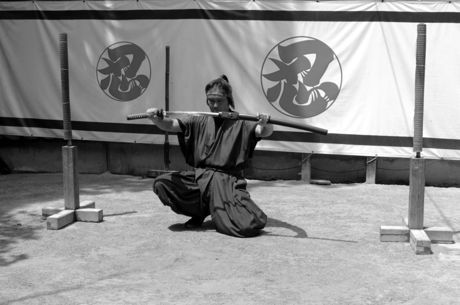Breaking Down a 'Suicide' Bluff

A bluff can be considered "suicidal" for a number of reasons.
The amount of money set on fire can be a cause for describing a bluff that way, such as when a player risks a lot with only a little to be gained. The strength of your opponent's range is perhaps the most important thing to consider in small stakes hold'em cash games, where bluffing against weak ranges can work, but bluffing against strong ranges, no matter how much strength is shown, will not. Finally, the blocker value of one's own hand can be considered, though often this should pale in comparison to the first two factors.
Let's take a look at a spectacular example of a "suicide bluff" and consider the reasons why in this case it is an appropriate descriptor.
A Small Flop Continuation Bet
The game is six-handed 200NL ($1/$2 blinds), played online in the "fast-fold" format (Zoom on PokerStars). A loose and splashy recreational player opened to $4.44 from under the gun and was three-bet to $18 by the regular who was next to act. It is likely the regular was picking on the recreational player who had been throwing a lot of money around the Zoom pool that day in a frankly reckless manner.
True to form, when the action folded back around our splashy recreational player called, meaning there was about $39 in the pot when the flop came down Q♥8♥3♦. From out of position, our picked-upon recreational player checked and the regular continued for $16.54.
This sizing is worth noting. Because the bet is smaller (even slightly) than the size of the three-bet, it may serve as an irritant to our recreational player. Recreational players sometimes will make small bets to irritate their opponents, but they are in turn themselves often irritated if they perceive a bet as small. The rec player called.
Backing Down on Bad Turns
The turn was the A♦. This card no doubt aides the regular's range, who also has the advantage of position. For the weak portions of the UTG player's range, this should signal a time to give up. But, as you might have guessed, this is not what happened. There was a lot of money still in the stacks behind, after all.
That's another mistake recreational players make — stubbornly continuing with hands simply because there is a lot of money behind. The fact that there's significant money in the remaining stacks should not license loose calls for relatively small bets. After all, getting to the river in a reckless way will often lead to reckless (and more potentially costly) acts to recapture what has already been lost.
The rec checked, the reg bet $51.30, and the rec made another out-of-position call.
A Nail in the Coffin
The river brought the K♠, making the final board is Q♥8♥3♦A♦K♠. For the in-position regular player, he is in a great position of strength. He could have three-bet pocket queens, pocket kings, pocket aces, ace-king, or ace-queen. All these hands are easily imaginable. Looking back to that second factor discussed at the start — the strength of someone's range — the strength of the in-position player's range here is very strong.
Despite this being true, the out-of-position recreational player decided to move all in, a big bet that crossed the bounds of the first factor listed above — risking a lot for a little. The shove was for $486.20 effective — about 243 big blinds to win pot of less than 90. This bet needs to work very often to be a strong play, and with their opponent's range so full of aces-up and three-of-a-kind hands, it is no exaggeration to label this as suicidal — assuming it is a bluff.
We could also consider, what exactly is the recreational player representing? J-T, one supposes, that was check-called twice, having turned a double-gutter that came in on the river. Actually, such a hand is not that implausible — remember, this player had been quite splashy.
But — perhaps stoically, perhaps while licking his chops — the regular player made the call with a set, but not the set one might expect, for he had 8♠8♦. The call was good, as the recreational player could only show J♠9♦.
The rec player had not turned a double-gutshot, but instead had check-called the turn with a single gutshot draw, looking for a ten only, which, given the two flush draws on board, would only have been clean on two cards. In order to make this call profitable, the UTG player is hoping both to get paid a lot when he hits and to take the pot away often on the strength of how much he can bet.
Perhaps on this river he were counting on his own card — the lowly J♠ — to do the bulk of the work, as it provides a blocker to the stone nuts J-T for Broadway (that third factor mentioned at the top). Even so, there are still 12 possible combinations of J-T out there, including 3 combinations of J-T suited. So the blocker effect on this case is quite weak — the opponent can still hold the nuts.
Moreover, we return to the matter of strength of ranges, the second, third, and fourth nuts — A-A, K-K, and Q-Q — are all plausible holdings, too, none of which is going to be inclined to fold, even facing such a ridiculous overbet.
Bluffing in small stakes is often about bluffing into weakness — bluffing weak ranges in small pots. Trying to take away big pots against strong ranges is a suicidal mission.
The Stars Group owns a majority shareholding in iBus Media.









